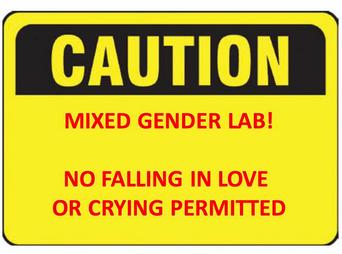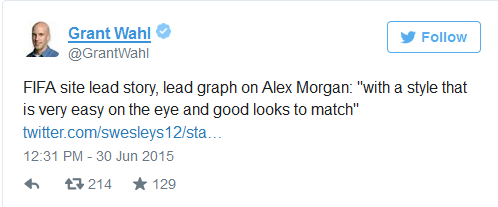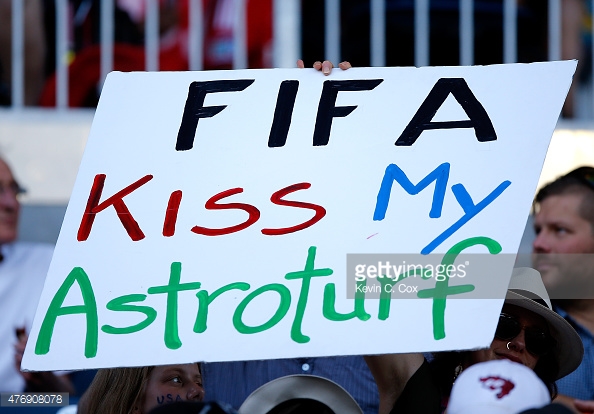
July 2, 2015 This summer has been heating up with a slow burn in social media maneuvers starting in June when female scientists set Twitter ablaze with the #DistractinglySexy hashtag in response to the now infamous comments made by Nobel prize winner Tim Hunt, who implied women were a distraction in the lab:
“Let me tell you about my trouble with girls…Three things happen when they are in the lab: You fall in love with them, they fall in love with you, and when you criticize them they cry.”
Word. It’s easy to see why female scientists donned their best “STEM + fem at work” poses in photographic essays of Distractingly Sexy duds, which gleaned over 10,000 tweets in just a few hours in a very public “shout out” and social media drubbing with signals and sentiments similar to the Howard Beale character in Network.
Shortly after the biochemist’s sexist gaffes, Mr. Hunt resigned from his honorary position at University College London, and follow up analysis quickly became news fodder far beyond talk show couches and internet memes.
Next came the deeper teaching moments, and critical thinking on the impact of assumptions and environments for women and girls in fields of STEM (science, technology, engineering and math) In the case of our allies at Media Girls Boston-based nonprofit, the “Distractingly Sexy” satire segued to a new idea for a weekly video/Q&A for their audience of young girls 11-14 to delve deeper into au courant topics. (For great resources on more STEM/STEAM portrayals in movies, check out the new section at Frank Baker’s always informative Media Literacy Clearinghouse.)
Shaping Youth uses mass media hits like Brave, Frozen, Hunger Games, or the latest Inside Out film to springboard into the deep end of young adolescent’s social emotional waters, so it’s fun to see media literacy colleagues at Media Girls are also asking girls to use pop culture to tap into the larger sphere of media influence; the global lens of gendered responses, and the impact and prevalence of what happens when stereotyped words and actions take hold.
From sports and science stereotypes to media sexualization, parents and educators can seize the moment (and media memes!) to use them as icebreakers to find out what’s on girls’ minds.

Just as I wrote about placing mothers and daughters on the same page with “Her Next Chapter” using book club opportunities to deconstruct media out of the shallow end, the Media Girls parents section serves as a quick clip video version with Q&A talking points for a short romp into media literacy…

Starting with the video clip next week, Media Girls will time it so that parents and teens can also open up discourse on Facebook if they want to hear from others peer to peer using their Media Girls’ Facebook page. You can also follow their fun takes on media messaging giving voice to girls via Instagram.
Here’s a simple show-n-tell of how YOU can use Media Girls Q&A format to tease out some meaningful dialogue with kids in your sphere…And more key questions about media education to take it further into the deep end.
MEDIA GIRLS Q&A
Q: What should I ask my child about the video clip featured?
A: 5 questions to ask your daughter or son.
1. How do you feel about what we just saw?
2. What messages do you think it sends to girls? What about to boys?
3. Is that a message you’re on board with, and why or why not?
4. What did you love about it? Or, in what ways do you think it could have been handled better?
5. Do you want to respond to it? If so, let’s talk about how.
Q: What if she or he wants to take action?
A: Here are 4 things your child can do.
1. Have her write a letter to the head of the company or organization responsible for producing the media, saying what she loves or hates about the messaging for girls. Here are some samples from MEDIAGIRLS.
2. Suggest she express her support or outrage using social media by posting a link to the media with her commentary. Example: “Hey, guys, check out this cool music video by __________ I just saw. Let’s hear it for seeing women as superheros instead of sex objects like so many other videos.”
3. Teach her she has the power to boycott products from companies who distribute negative messages for girls, and purchase products that she thinks use positive messages. She can even use social media to ask her “followers” to do the same.
4. Suggest she create a response using media, whether it’s creating a short video on her phone; writing a blog post, crafting song lyrics, performing a rap song, etc. Not only will she get practice expressing herself, but she’s developing technical and artistic skills–and becoming part of our cultural revolution.
Importance of media literacy has never been greater
Why do we ALL need to callout media messages lobbing sidewinders into kids’ spheres every minute? For starters, because ludicrous gaffes and ‘givens’ just keep happening. Again and again.
It needs talked about, because make no mistake, youth are watching these media antics and observing how this plays out in the press. Every bit of it…
The pushback, the policy, the precedents and the pundits are especially noted by adolescents, developing their sense of self, their roles, their place in the world.
This week’s case in point?
Imagine being a young “tween” aged 11-14, who happens to be watching women’s soccer as the U.S. wins over top-ranked Germany to earn a shot at the World Cup finals, with historically high levels of talent deemed watchworthy to perhaps even take the prize.
Woohoo, go World Cup soccer, right?
Hmn. Not so much. Not if you imagine that “woohoo” redirected with “easy on the eye” FIFA commentary in an article that dismissively sexualizes a top player with sophomorically vapid values…
As a tween girl (and possibly a soccer player to boot) how would that make you feel?
What statement does it make about what we value in our culture?
How can we best empower young girls with critical thinking to upend sports stereotypes and reframe the narrative behind the media lens?
That FIFA editorial ogling is not only tone deaf, referencing athletes’ appearance over prowess, objectifying with ‘hottie’ fascination and skewing coverage to the less covered bits of sports media, it sends a strong and damaging message to girls AND boys about power, perception and what ‘matters’ out there, according to media players. (from Sports Illustrated swimsuit citations to retro flashbacks of the federation’s call for women’s soccer to wear tighter uniforms)
How can we inspire corporations to sponsor and fund women’s initiatives, when it’s readily apparent the playing field is not remotely level, and the merchandising ‘value’ of female athletes gets tethered to ‘hotness.’ Is it any wonder why Danica Patrick is a ‘racy’ role model as one of the world’s highest paid female athletes when media rewards sexualization and objectifcation?
Media, Money, & Astroturf
Generated by IJG JPEG Library
On the bright side, using media literacy for critical thinking, these misogynistic misfires DO kick off an entirely different brand of the “Distractingly Sexy” conversation opening doors to youth media literacy about female athlete media portrayals, soccer politics, performance and the almighty greenback for ‘merchandising opportunities.’ (See Media Education Foundation’s film “Playing Unfair”)
Tweens are also NOT missing the glaring gender inequities being presented in living color, such as FIFA’s women’s soccer relegation to astroturf over grass fields causing countless injuries and outrageous heat. (thankfully being tossed once and for all, after social media petitions and player protests galore)
What can we do? Reframe the narratives, accentuate the sport skills, discipline, teamwork, and athletic body functionality with performance, prowess and positivity…As for the slurs?
Talk about it. Give voice. Use media literacy.
Team up. Share best practices. Create “Media Girls”…
 Here’s more from Media Girls Founder Michelle Cove who explains her mission with an impassioned, purposeful goal to make a difference in this focused niche market of “tweenage” media machinations…
Here’s more from Media Girls Founder Michelle Cove who explains her mission with an impassioned, purposeful goal to make a difference in this focused niche market of “tweenage” media machinations…
“Media Girls is aimed at girls in middle-school (aged 11 to 14). I chose to focus on that age group because we know from research (and from personal experience for many of us) that it’s this age when girls’ self-confidence nosedives. It’s when hormones are going crazy, their bodies are changing rapidly, and friendships and other relationships are getting more complicated. And if that wasn’t enough, they are consuming eight to ten hours of media a day, most of which tells them that their true value lies in how “hot” they are. Unacceptable!
We not only teach girls how to evaluate and challenge those media messages, but to help change the culture by learning how to create and distribute empowering content on our blog and with our social media. It’s incredibly powerful for these girls to know their voices matter, and see that they’re part of the solution.”
Cue wild applause. And welcome fresh troops to the cavalry!
Shaping Youth has been focused on changing the channel of influence for almost a decade now, using applied science in multiple forms, and I am absolutely thrilled to see so many fresh partnerships and alliances forming as we all forge forward aiming to bring a healthier worldview to kids.
Watch for more mutual alliances with NAMLE (Nat’l Assoc of Media Literacy Education), Media Literacy Now, and partnerships with the first ever digital citizenship summit”DigCitSummit.com” coming in the fall, Oct. 3, 2015. Media literacy is finally starting to get on the radar, as we reach a tipping point toward tools and tactics that make sense to inoculate kids about media messages at increasingly younger ages.
I heartily encourage you to use Media Girls videos and Q&A weekly to jump start summertime dinner table topics, ask questions, get to know your kids, use media moments to your advantage and engage with pop culture in fun, fresh ways!
Visual credits: Featured dissolve montage of #DistractinglySexy scientists via Tiny Obsessions WordPress blog. Astroturf signage photo- Kevin C. Cox/Getty Images, “Caution-mixed gender lab” graphic-Steve Diggle/Twitter via The Guardian; Lab suit/Twitter screenshot via Daily Kos all others from their respective sites.











Speak Your Mind